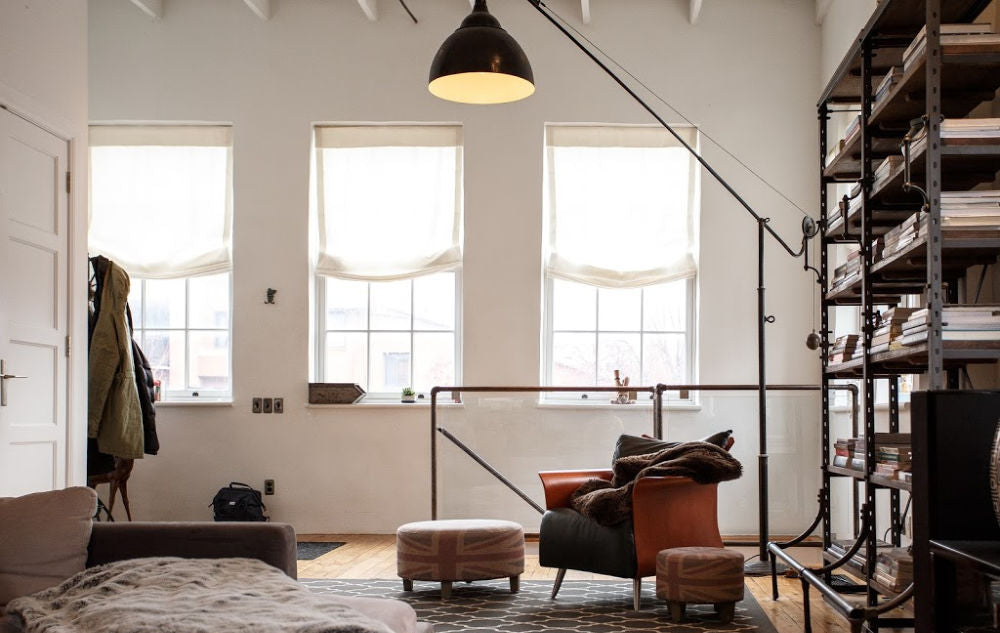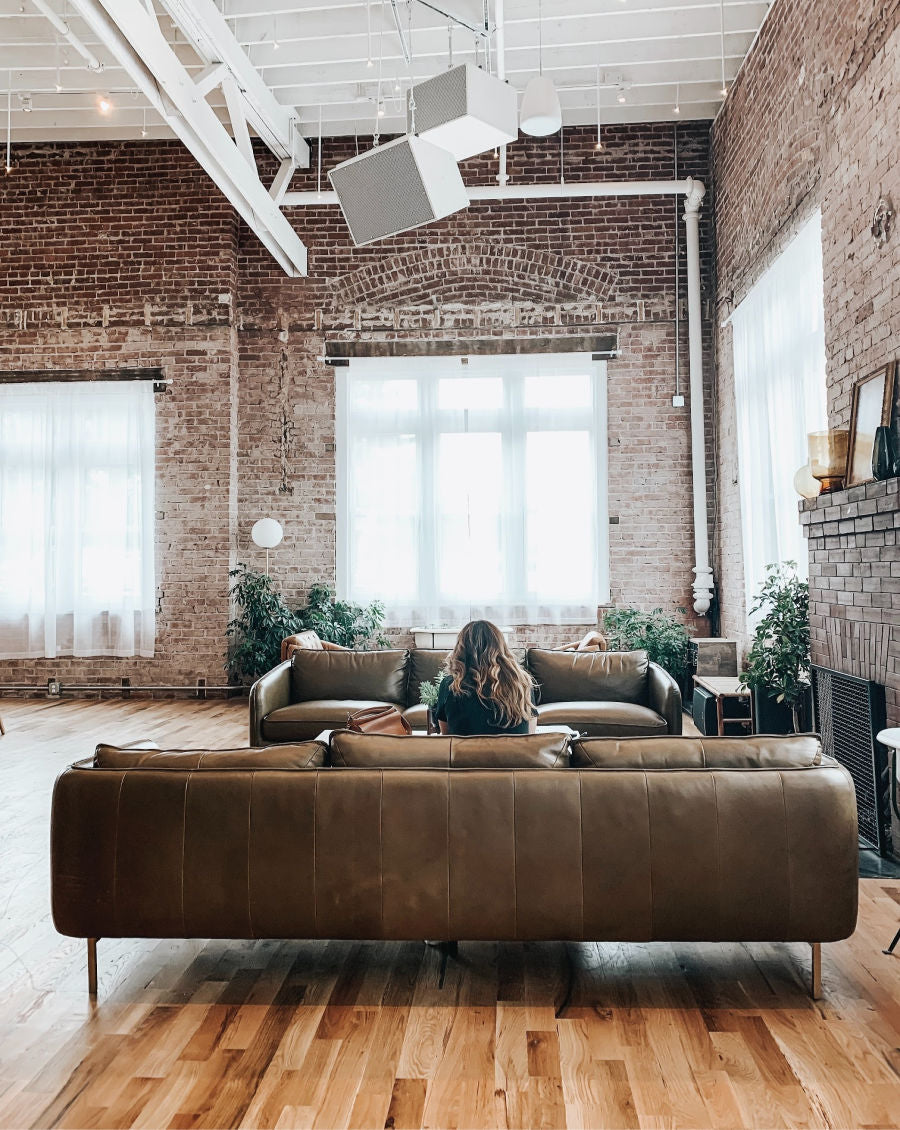Stunning Loft Decorating Ideas

Lofts are usually spacious, with high ceilings, large windows and a wide-open living space with few or no internal divisions. True lofts are converted industrial or commercial buildings that are repurposed as residences, offices or studios. Features often include exposed electrical wiring, ducts and water and gas lines. Walls may be unfinished cinder block or brick, and floors may be concrete, stone or wooden boards. These features make lofts desirable living spaces. However, these same characteristics make them challenging to decorate.
Celebrate Its Features
Keep the décor in tune with the character of the space. Identify the important features, and incorporate them into the décor and arrangement of the living area. Pillars can serve as anchors for sliding room dividers, panels, curtains or storage. Even without adding a physical division, columns, pillars and ceiling beams can suggest a change in delineation of space.
Wood flooring throughout brings a sense of flowing unity even if you divide the space into activity areas. If the walls are brick, incorporate the wall's texture and color into the decorative scheme.

Define Activity Areas
Think carefully about how you live and your needs. Do you need a large kitchen or a place to entertain? If you work from home, do you want a separate office? You may prefer having a bedroom partitioned off from the main living area. If your budget allows, a second level, or a loft within a loft, can serve as a more private space. Soaring ceilings may allow enough room for a floating office or bedroom above the living area.
There are many ways to designate activity areas. Movable shelving or open storage units can create a partition without adding a wall. Because of the large scale, floor-to-ceiling storage on walls or pillars doesn't overwhelm the space. Curtains can be used as partitions, opening them when privacy is not required and closing them when needed. Interior glass doors give a sense of privacy and separation of space without affecting the feeling of openness. For a unique look, take them from floor to ceiling.
Half-walls can also be used to separate spaces. By adding shelving or cupboards, you get more storage as well. Group furniture according to activities, such living area, dining, sleeping and entertainment. Place a rug under the edges of a sofa, chairs and coffee table to create a living room. A decorative screen placed near the end of a bed can close off a sleeping area. A bar or island between the kitchen and living area area can provide extra preparation and storage space or serve as an informal eating area.

Choose a Color Palette
Decorators recommend using a soft or neutral color palette throughout the loft. This gives coherence to the space, and allows you to easily rearrange furniture or activity areas if you choose. You can personalize it with colorful accessories, such as oversized throw pillows, wall hangings, carpets, artwork and window treatments. Coordinate the palette with the colors of the original architectural elements of the loft, such as brick walls or floors, steel beams, aluminum windows or wooden ceilings.
Decorate to Scale
Because lofts are large, furniture, accessories and lighting should reflect the scale. In industrial loft conversions, lighting should complement the scale as well as your design scheme. One central pendant light can affect the arrangement of the living space. Instead, place lighting over activity areas to create a sense of separate space.
Make Use of Windows
Lofts often have large windows, which should be celebrated, not hidden. There are several types of window treatments that work well in lofts, including layered draperies, shades and blinds. As with furniture, you want window dressing to be scaled to the room. Hang curtains high to complement the high ceilings.

If privacy is not an issue, accentuate their attractive features with minimal window coverings. Select curtain hardware to complement the window's features. If the windows have lead mullions, wrought iron rods accentuate the color and geometric symmetry. Use inside mounts for blinds and shades to show off window frames or other features.
If you live in an area with extremes of climate, use thermal window treatments. Cellular shades have the highest R-value of all. They can reduce heat loss by 40% and up to 80% of solar heat gain through windows. Properly installed thermal curtains can reduce heat loss by up to 25%. Draw heavy curtains at night in cold climates or during the day in warm climates. During the winter, open curtains during the day to capture the sun's heat. If privacy is an issue, sheers work well for daytime use.
Other options that complement large windows include balloon shades, Roman shades, vertical blinds and bamboo shades. If the living space is neutral, colorful or patterned curtains can serve as a focal point. However, if you want window treatments to blend in, keep them in shades that complement the base colors of the room. Because the basic features of lofts are industrial, select styles that complement this look. Avoid frilly, fussy or overly decorative styles.
By considering your needs and the features of the loft, you can organize and decorate the space to be functional and reflect your personality and tastes. A great advantage of a large, open living space is that it can be easily reorganized if you tire of one arrangement. By using furniture and accessories instead of walls to delineate space, your options are almost endless.
Feel free to join in our Affiliate Programs
Recommended For You
5.0 / 5.0
16 reviews4.98 / 5.0
47 reviews4.95 / 5.0
22 reviews5.0 / 5.0
24 reviews5.0 / 5.0
9 reviews4.92 / 5.0
13 reviews4.8 / 5.0
5 reviews5.0 / 5.0
5 reviews5.0 / 5.0
1 review4.96 / 5.0
24 reviews5.0 / 5.0
1 review






















